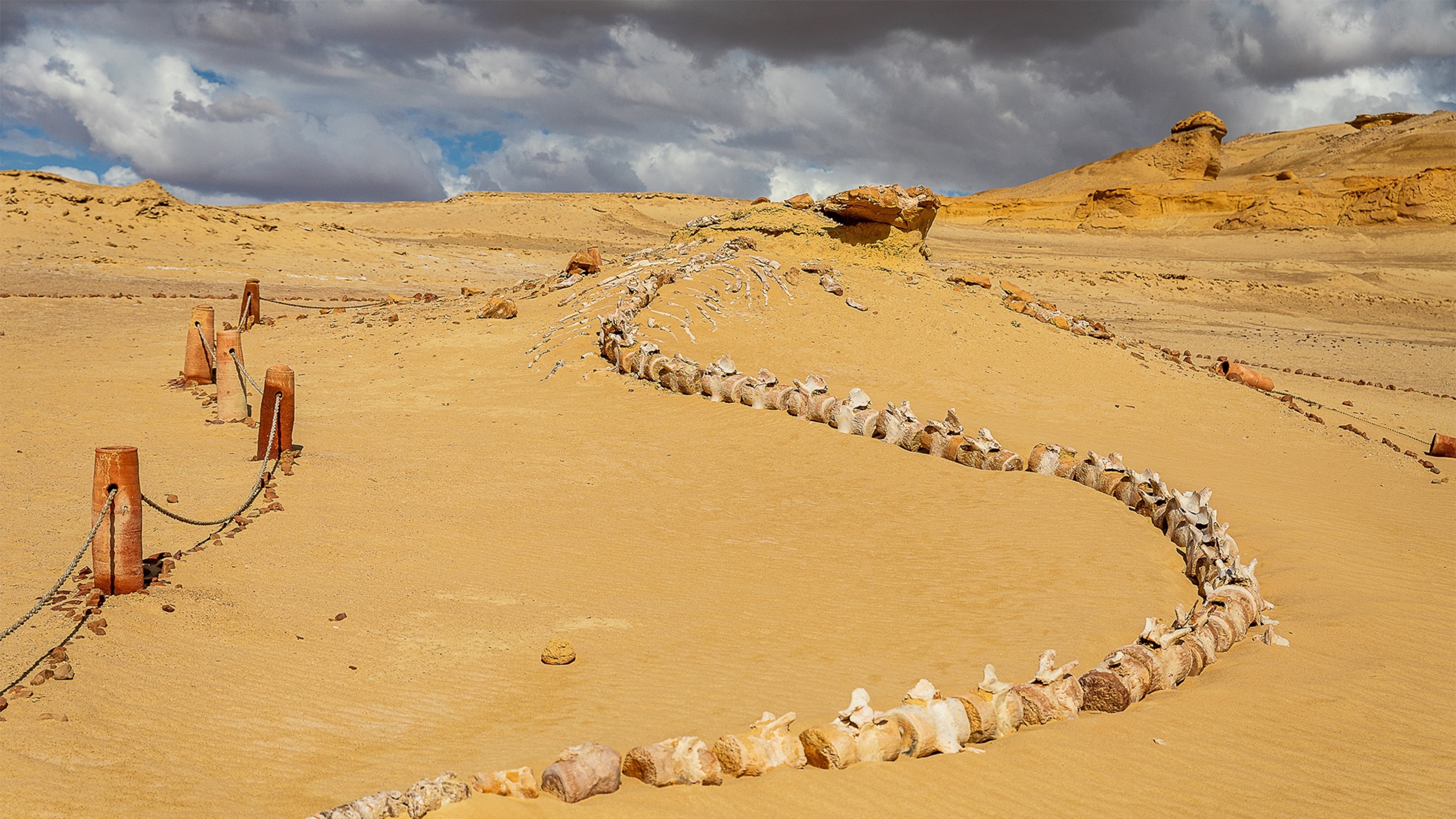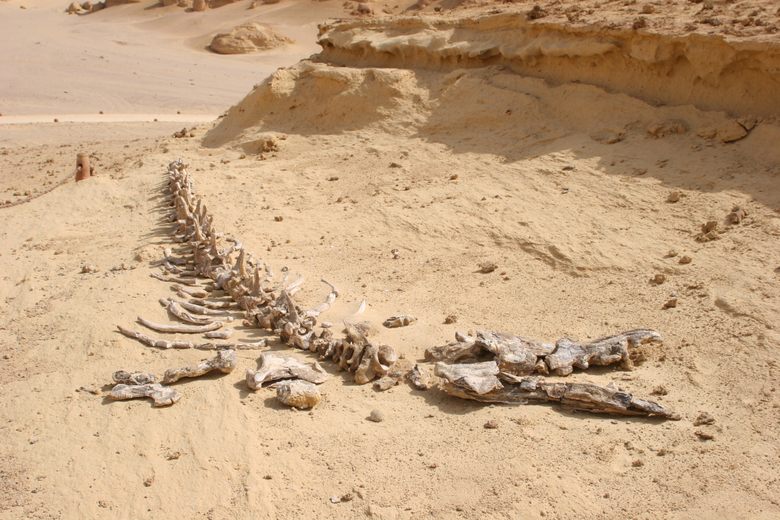Wadi Al-Hitan, or the Valley of the Whales, is a UNESCO World Heritage site located in Egypt’s Western Desert. This extraordinary site is renowned for its exceptional collection of fossilized whale skeletons from the Eocene Epoch, a time when the region was submerged beneath a warm, shallow sea. The fossils found at Wadi Al-Hitan, such as those of Basilosaurus isis and Dorudon, provide invaluable insight into the early evolution of whales, showcasing species that still retained small hind limbs, feet, and toes—features that highlight the transitional stage from land-dwelling ancestors to fully aquatic creatures.

The Evolutionary Importance of Wadi Al-Hitan
First uncovered in 1902, Wadi Al-Hitan has since become a key site for understanding the evolutionary history of marine mammals. The fossilized remains discovered at this site provide a detailed record of life during the Eocene Epoch, a time when the planet’s climate was much warmer, and the seas were teeming with a variety of marine life. Among the most important discoveries are the fossils of Basilosaurus isis, a long, snake-like whale, and Dorudon, a smaller species of early whale.

These species retained small, vestigial limbs—an essential piece of evidence in understanding the transition from land-dwelling mammals to ocean-dwelling creatures. The presence of these early whales marks a pivotal point in the evolutionary timeline of marine mammals.
Diverse Marine Ecosystems of the Eocene
In addition to the whale fossils, Wadi Al-Hitan has provided a wealth of evidence about the marine ecosystems that existed during the Eocene. Researchers have unearthed fossils of sea cows, marine turtles, and the preserved roots of mangrove trees, suggesting that the area was once home to a rich, diverse ecosystem. Fossils of marine invertebrates and fish further illustrate the vibrancy of the prehistoric sea that once covered this desert region.

From 1983 to 2007, over 400 skeletons were discovered in the valley, many of which were found in remarkably well-preserved conditions. These discoveries have been crucial in piecing together the marine life that once thrived here, offering a snapshot of life in the prehistoric seas. The preservation of these fossils, many of which are nearly complete skeletons, provides researchers with invaluable data about the anatomy, behavior, and evolution of ancient marine species.
Wadi Al-Hitan: A Symbol of Evolutionary Change
The significance of Wadi Al-Hitan extends beyond its fossilized remains of marine mammals. The presence of Paleocene and Eocene flora, such as ancient mangroves, indicates that the region was once a lush and verdant coastal environment. This rich ecosystem would have supported a diverse range of life, providing a stark contrast to the arid desert landscape that exists today. The site also offers rare evidence of the interaction between marine and terrestrial life, showcasing the ways in which ecosystems were interconnected during a period of rapid evolutionary change.

Conclusion: A Monument to Earth’s Prehistoric Life
Wadi Al-Hitan stands as a testament to the planet’s rich evolutionary history. Its fossilized remains offer crucial insights into the development of marine mammals and the complex ecosystems of the ancient seas. This site serves as a living monument to Earth’s past, preserving a unique window into the natural world millions of years ago. Despite the harsh desert conditions that define the landscape today, Wadi Al-Hitan remains a symbol of the changing environments and the remarkable adaptability of life on Earth. The fossils at Wadi Al-Hitan underscore the deep connection between the planet’s distant past and its present, highlighting the ongoing evolution of life on Earth.

